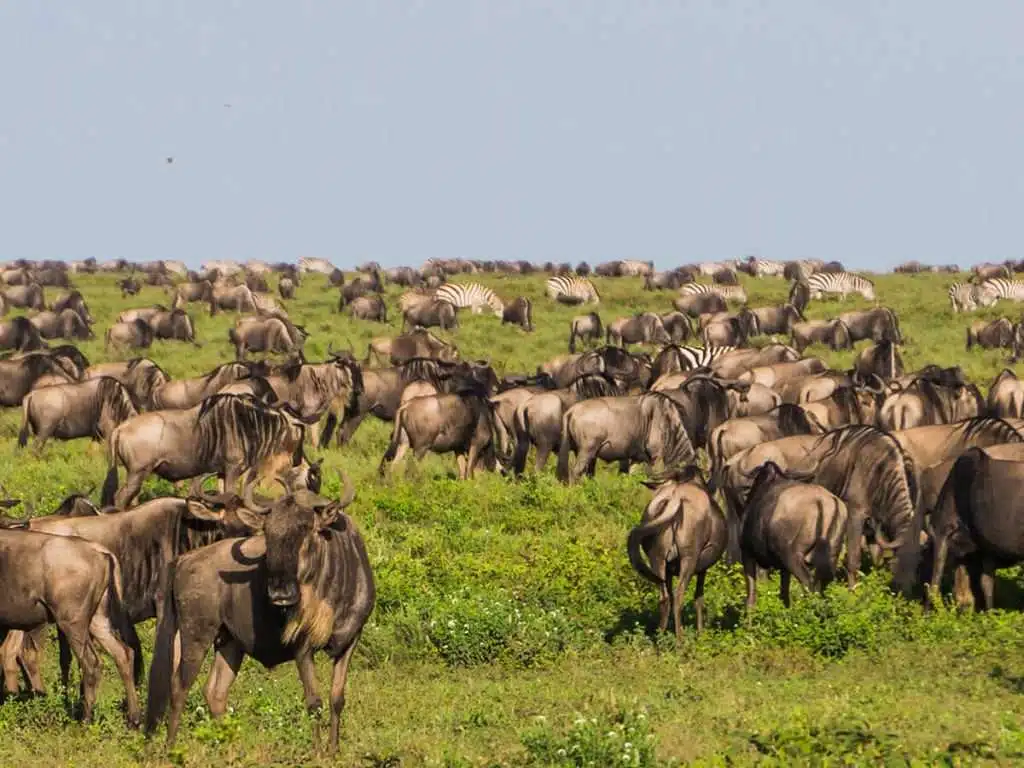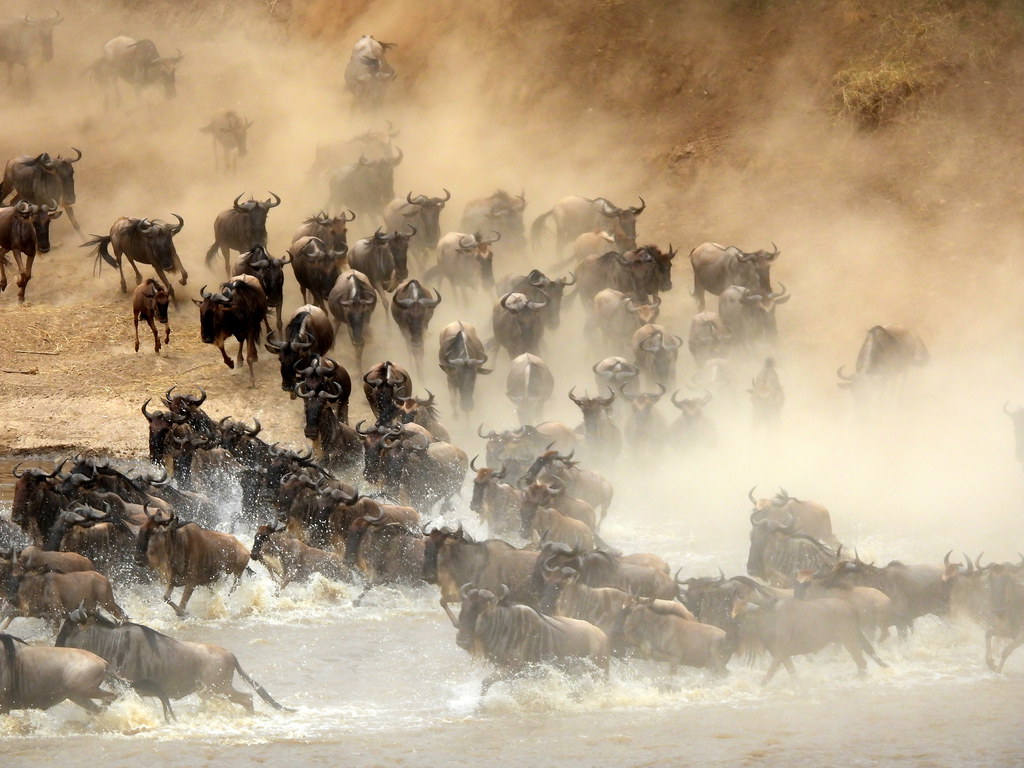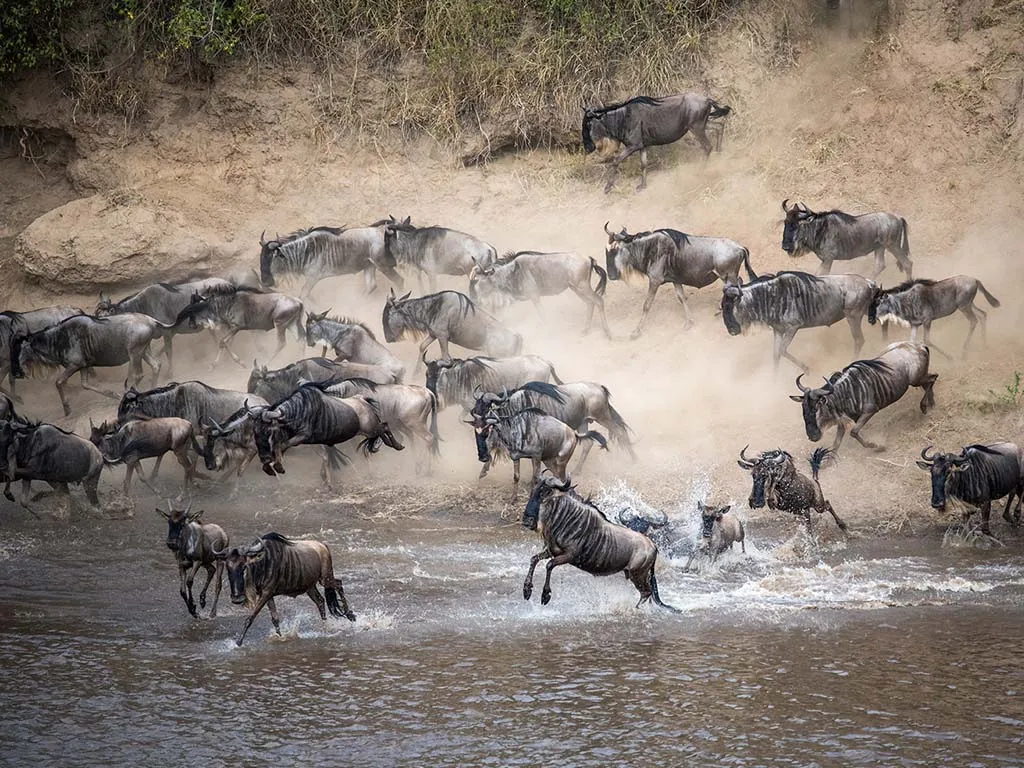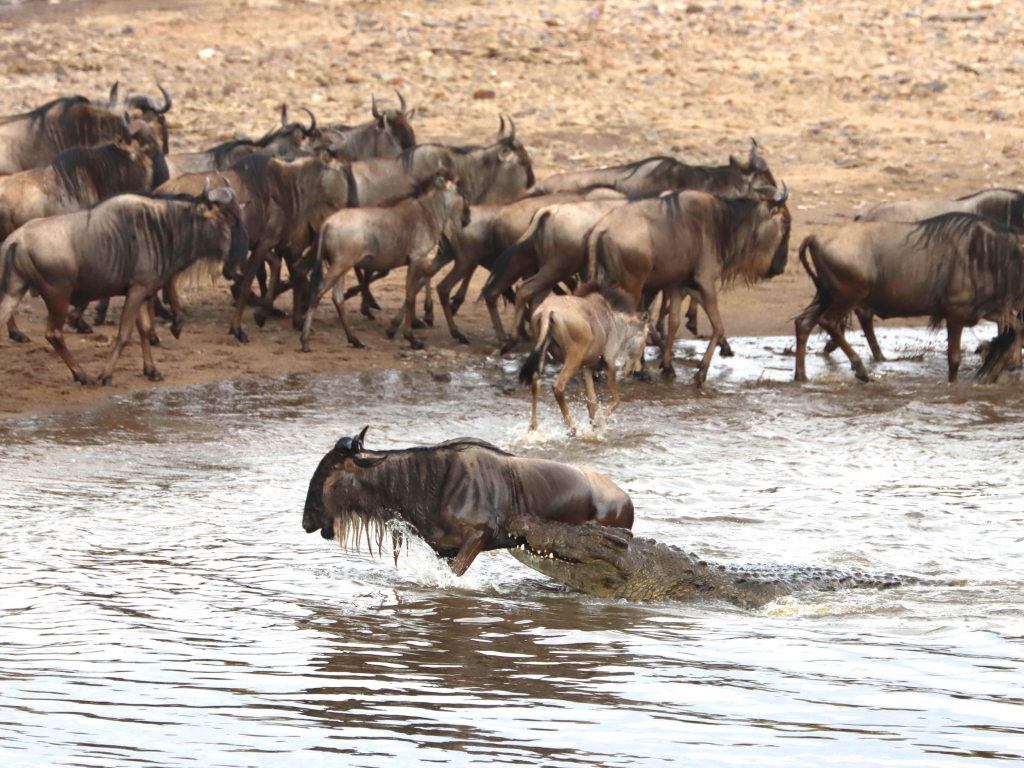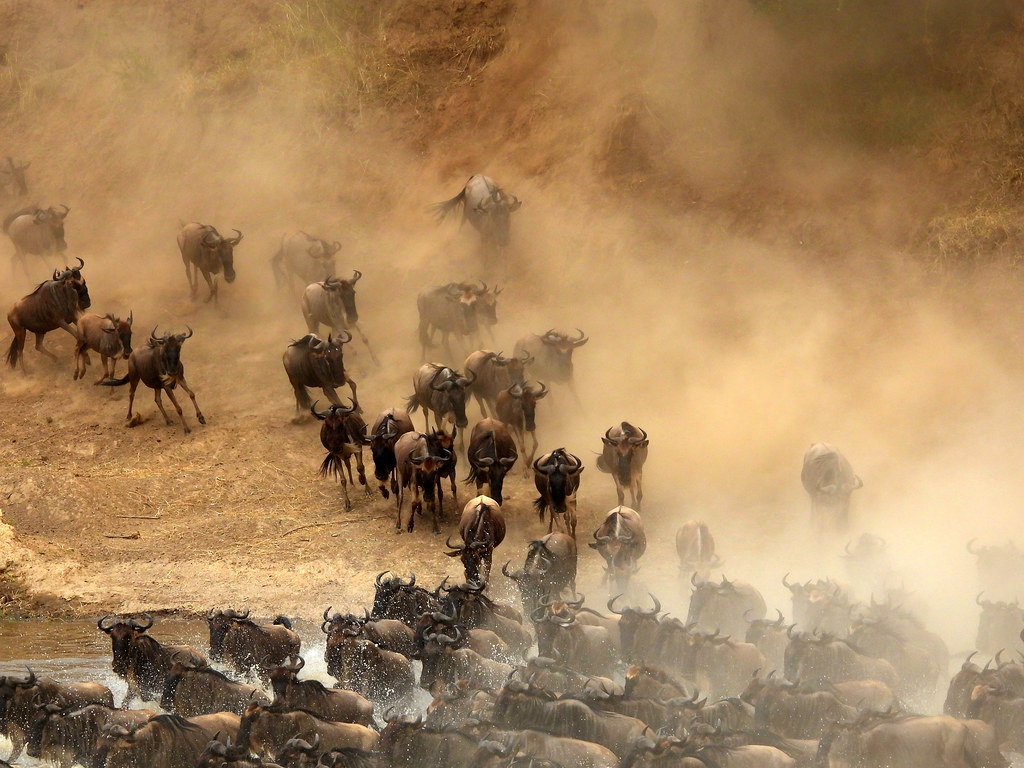The great wildebeest migration isn’t one single event – it happens all year round. The wildebeest migrate in a continuous, circular route through the Serengeti in Tanzania and the Masai Mara in Kenya.
The exact timing of the migration depends on the weather and behavior of the animals. But the wildebeest follow a rough schedule determined by the arrival of rains at different times of the year.
The start of the migration generally aligns with the start of the year. Throughout the year, the wildebeest march north to Kenya and eventually back down to the open plains of the Serengeti in December.
When is the best time to see the great migration?
At any time of year, you can see the wildebeest on the move. The best time to see the great migration depends on what you want to see.
Find out when to witness calving season, or see the dramatic crossings of the Mara river, with our month by month great wildebeest migration tracker.
January: Massive herds of wildebeest graze on the open plains of the Serengeti
The start of the year signals new beginnings. In January, the wildebeest spread out on the Ndutu Plains in preparation for the calving season.
At the start of the year, the grasses on the Serengeti are lush and green. The air is crisp. Wildlife is easy to spot. January is an excellent month for going on safari.
February: Calving season in the Serengeti
February is the main calving season for the wildebeest. Around half a million calves are born in the Serengeti during February.
Go on safari in February, and as well as seeing a birth, or newborn calves tottering along on shaky legs, you could also see predators leaping into action.
Lions, cheetahs, and leopards lie in wait ready to pounce on the youngest and most vulnerable herd members.
March: The start of rainy season
By March, most of the wildebeest will have given birth. The calves are steadier on their legs and ready to move.
March is also when the long rains begin, signaling the start of the rainy season in Tanzania.
April: The wildebeest start to move north
April is when the wildebeest start to move away from the calving grounds in the south of the Serengeti.
The herds start to drift northwest in search of fresher grass growing in the central Serengeti.
May: The migration gains momentum
By May, the herds of wildebeest are moving through the Ndoha and Dutwa plains in the Serengeti’s Western Corridor. Columns of wildebeest can stretch for several kilometers, before piling up in huge numbers by the pools and channels of the Mbalagwet and Grumeti Rivers.
With opportunities to witness river crossings, and fewer tourists in the Serengeti, May is a great time to go on a great migration safari.
June: Mating season starts
June is the start of the dry season. The drought urges the wildebeest onward, forcing them to brave the crocodile infested waters of the Grumeti River in the Western Serengeti.
This is also the month of the rut, or the mating season. If you visit during this time you might get to see male wildebeest battling head to head as they fight for the attention of the females.
July: The wildebeest cross into the Masai Mara
By July, the hundreds of thousands of wildebeest have usually reached the Mara River.
The Mara River crossing is a time of high drama. Lions, cheetahs, and hyenas lurk on the river banks, waiting for wildebeest to stumble. Crocodiles lie in wait in the muddy water, jaws cocked and ready to snatch the weaker members of the herd. In the river itself, currents swirl treacherously.
The wildebeest surge through these perils in a great moving mass. This desperate fight for survival is one of the greatest wildlife spectacles on the planet.
There is no single crossing or specific location. In some places, the mass of animals streams across the river for hours, while in other locations there are only small groups dashing through the water.
Although it’s impossible to predict exactly when these river crossings will take place, visiting during July will give you a greater chance of seeing this marvel.
August: Grazing on the Masai Mara
August is a busy month for river crossings. At the start of August, the wildebeest herds are still moving north, traversing the Mara river system. This is an action-packed time to see the migration, with a good chance of seeing crocodiles snap their jaws around passing wildebeest.
Throughout the month, the wildebeest spread out across the Masai Mara and the northern Serengeti.
There typically isn’t much rain in August, so it’s a great month to go on safari. However, this is the high season for tourism, so make sure you book in advance and be prepared to spot lots of people as well as animals.
September: The last month of river crossings
In September, the crowds of people start to thin, but there’s still plenty to see on the wildlife front.
Most of the migrating herds have spread out across the fields of grass on the Kenyan side of the park.
Predators still stalk the wildebeest, and if you’re lucky there is still the chance to witness a river crossing.
October: The short rains begin
In October, the short rains begin and the wildebeest start their long journey back down to the Serengeti. The wet season brings cooler days and more animal activity.
Once again, they must face the dangerous Mara River. As the herds head south in search of grass, long columns of wildebeest and zebras once again stretch through the central Serengeti.
November: The wildebeest continue moving south
The short rains continue in November, driving the wildebeest further south.
As the shoulder season, November is a great time to see the migration as wildlife watching opportunities are still good, while prices tend to be lower.
December: The circle closes
In December, the wildebeest herds are moving toward the southern plains of the Serengeti. By now, the female wildebeest are heavily pregnant. They are searching for grass nourished by the rains, and the plains where they will give birth.
As the wildebeest reach the area surrounding Lake Ndutu in the Ngorongoro Conservation area, the long loop closes and the great migration cycle is completed for another year.

